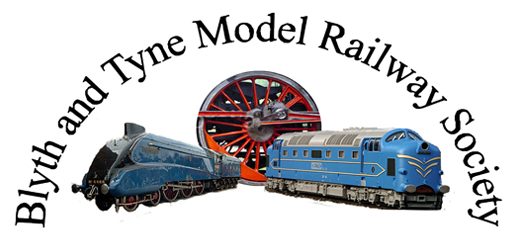Bedlington
7mm/OO Scale,
Contact – Trevor Smith
Dimensions – TBC
Control Method – DCC
Background
When the Blyth and Tyne Model Railway Society moved to Redpath House our membership was around 30 members, with between 15 – 20 active on any one evening. Over subsequent years, we have increased our membership to more than 60.
Our annual exhibition, open days, events such as the Police Open Day and shopping centre displays have been successful in encouraging new members to join. Recruitment of new members doesn’t seem to be an issue and we have more young members than most model railway clubs. What has become an issue is that some people join the club full of enthusiasm, but their interest wains and their membership lapses.
The committee has explored various avenues to retain members – a buddy system, a membership secretary, regular contact and welcome packs. The committee concluded that building a new club layout and encouraging new members to be involved would retain their enthusiasm and interest.
The new layout;
- would be built to modern standards,
- would be portable,
- would be built to an exhibition standard,
- would be simple to operate,
- would have a North East theme,
- would be of a generic design to run trains from different eras,
- would support both DC and DCC operation
- would fit in a standard transit van
The baseboards were donated by a club member and are not as mobile and easy to dismantle as first envisaged, but do save the club more than £1,000 if new boards were purchased. Each board is 4 foot by 2 foot which means they will fit in our lift.
Through discussion, Bedlington Station was the chosen location.
Parameters
Givens and Druthers
The concept of Givens and Druthers is an American modelling concept to determine the specification and guide the development of a model railway.
The Givens are the constraints that the model railway must exist within – they can be self-imposed and in the control of the modeller or they can be constraints made by outside factors like space available or access issues.
The Druthers can be described as a wish list, the optional aspects of the layout that can be modified or developed as the layout is developed.
Givens for Belington
- The layout must provide a learning experience for members.
- The layout’s operation system should be within the capabilities of all members.
- The layout must reside in the allocated space within the club.
- There should at least 3 feet around the layout so that it can be worked on from both outside and inside the baseboards.
- The layout should be of an exhibition standard.
- There are no criteria to define exhibition standards, but will include obvious aspects of design, prototypical operation, build quality and more elusive qualities such as “atmosphere.”
- The layout should be viewable from the front and the sides, or in the round.
The layout must be capable of operation by a maximum of four people. - Three operators can travel travel in a hire van and a fourth by car or train. Four operators can occupy two twin hotel rooms making the layout affordable for a hosting exhibition manager.
- The Layout must fit in the lift.
- The maximum baseboard size is therefore 4 foot x 3 foot.
- The layout must fit in a standard size transit van.
- Boards should be stackable.
- The baseboards should be lightweight and be manoeuvrable by two people.
- Alignment dowels and latches should hold the boards together.
The track should be code 75 Peco Streamline as a minimum for appearance and reliability. - The track should be laid on a cork bed to replicate ballast shoulders on the real railway.
- Curved track should have a slight cant.
- The track should have appropriate furniture, track rodding, AWS, TPWS, trunking and signal wiring.
- The operating system should be DCC but it should be wired so that an alternative DC operating system could be substituted. This will allow club members to operate DC locomotives if needed.
- The minimum radius of track should be 30 inches.
- The radius of the points should be as large as possible.
- The points should be electrically activated and have live frogs for reliable running.
- The layout should be able to be erected within a two hour period.
- All electrical connections should be on the inside face of the layout so that no one has to crawl underneath to fix the wires together.
- The layout should be capable of hands-free operation, both coupling and uncoupling.
- Operators should aim to have a two hour operating period at an exhibition without interference from “the Hand of God!” (No derailments, no operator error.)
- No stalling from dirty or poor track alignment.
- No short circuits.
- The layout should have an appropriate valance and appropriate lighting.
Druthers
- The layout should have a mixture of mainline running and shunting.
- Observers can see mainline trains operating at scale speed in a realistic surrounding.
- There should be sidings and track work that allows for shunting and where the trains run slowly so the observers can take photographs or can look closely at the details on locomotives or stock.
- Stock should be of similar detail standards and within reason all stock should be suitably weathered. All the stock should have metal wheels.
- The track should be cleaned before each operating session.
- The layout should have the capability to be operated from the front scenic area for good communication with observers at an exhibition.
- The layout should have accurate working signals and operators should observe all signals.
- The layout scenery should be accurate and consistent to reflect location and season of the year.
- The layout details, vehicles, station details, signage, road signs, road markings, figures clothing must reflect the chosen location and be specific to the time period of the layout.
Why Bedlington?
The Blyth and Tyne Line had obvious connections with the Blyth and Tyne Railway Society, Bedlington was close enough to make site visits and the Blyth and Tyne line through Bedlington would have seen most of the North East’s iconic trains through East Coast Main line Diversions.
Iconic trains and locomotives could include the Scottish Pullmans, top link Anglo-Scottish passenger trains, car trains, Blue Spot fish vans, Cliffe-Uddingston cement trains, A4s, A3s, A1s, Deltics, Class 45s and Blue DMUs from the opening scenes of the Likely Lads.
Plan
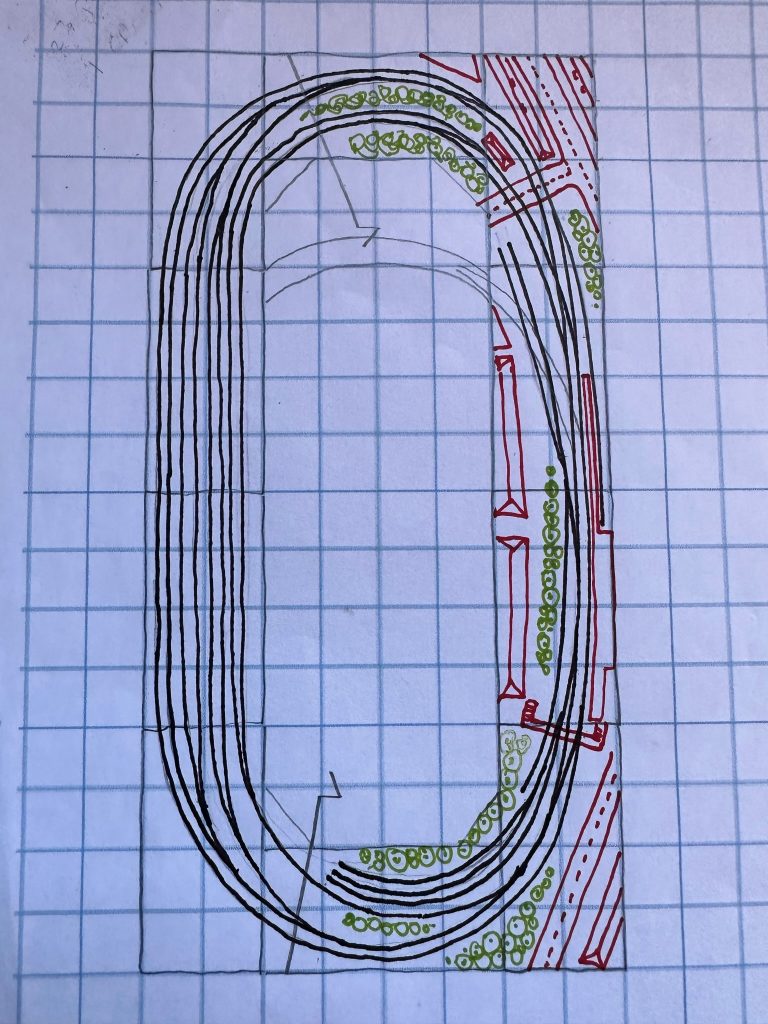
Pencil and paper used to create initial plans and then modified, redrawn and reworked a number of times until the build team are satisfied. The plan is a representation, the size of baseboards, allocated space in Redpath House, window location, electricity supply and all round access were issues that needed to be taken into consideration.
Roadbed
Track centre lines to be marked precisely to baseboards from agreed track plan
Cork, to be cut into 15mm strips with one bevel edge to create a ballast shoulder.
Vertical edge to be glued to centre line with PVA glue, weighted and allowed to dry. Second strip to be added in the same way to create a shouldered road bed.
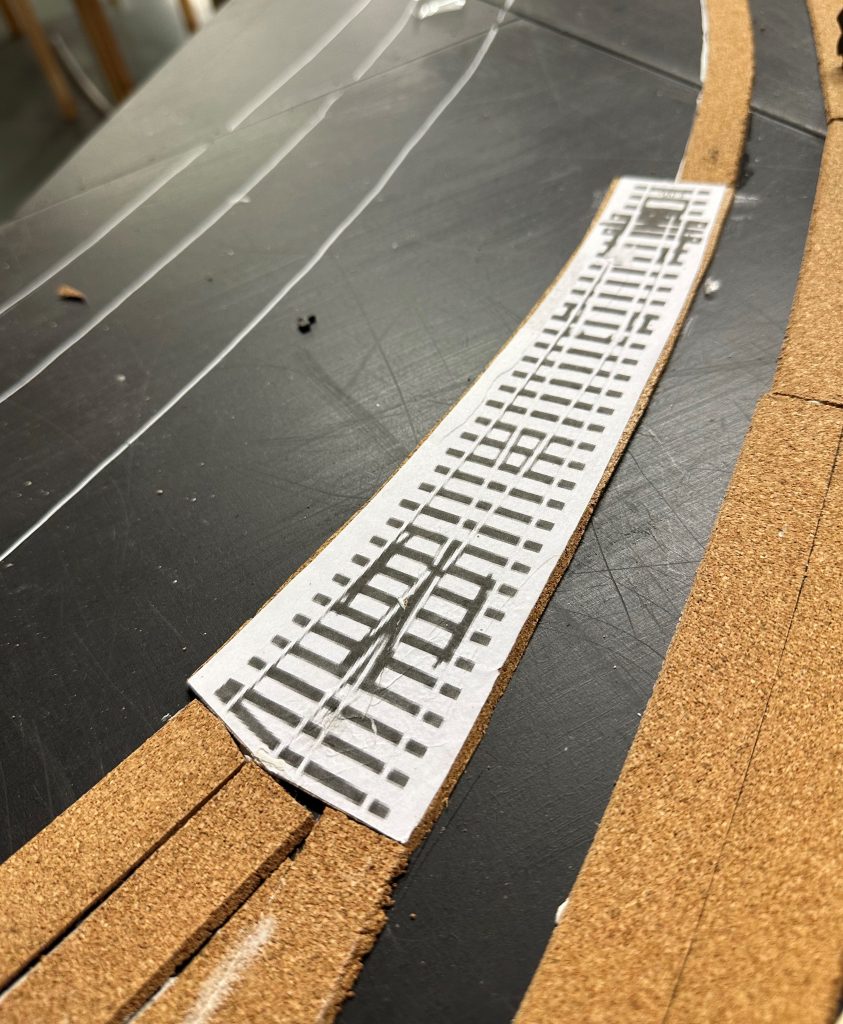
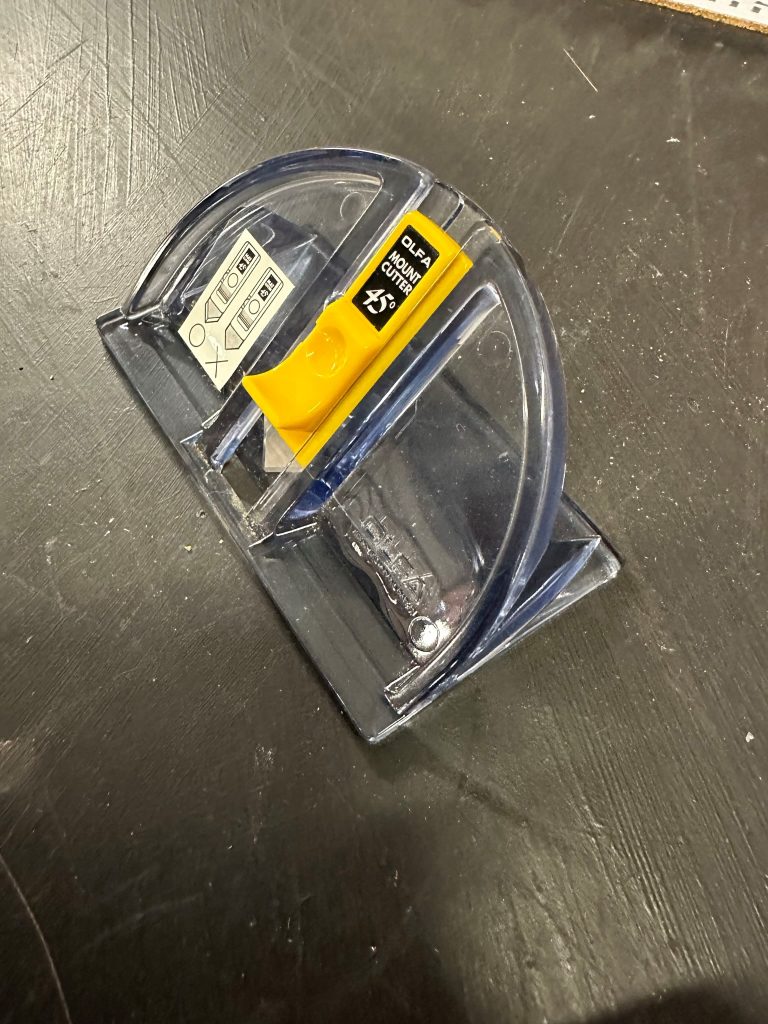
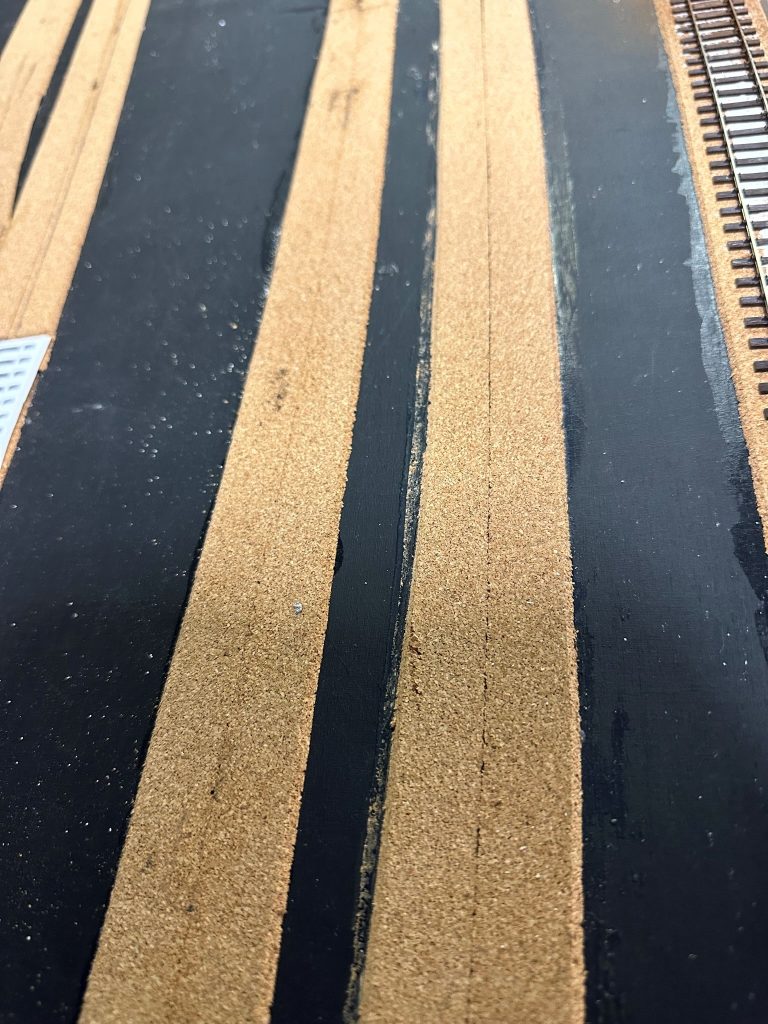
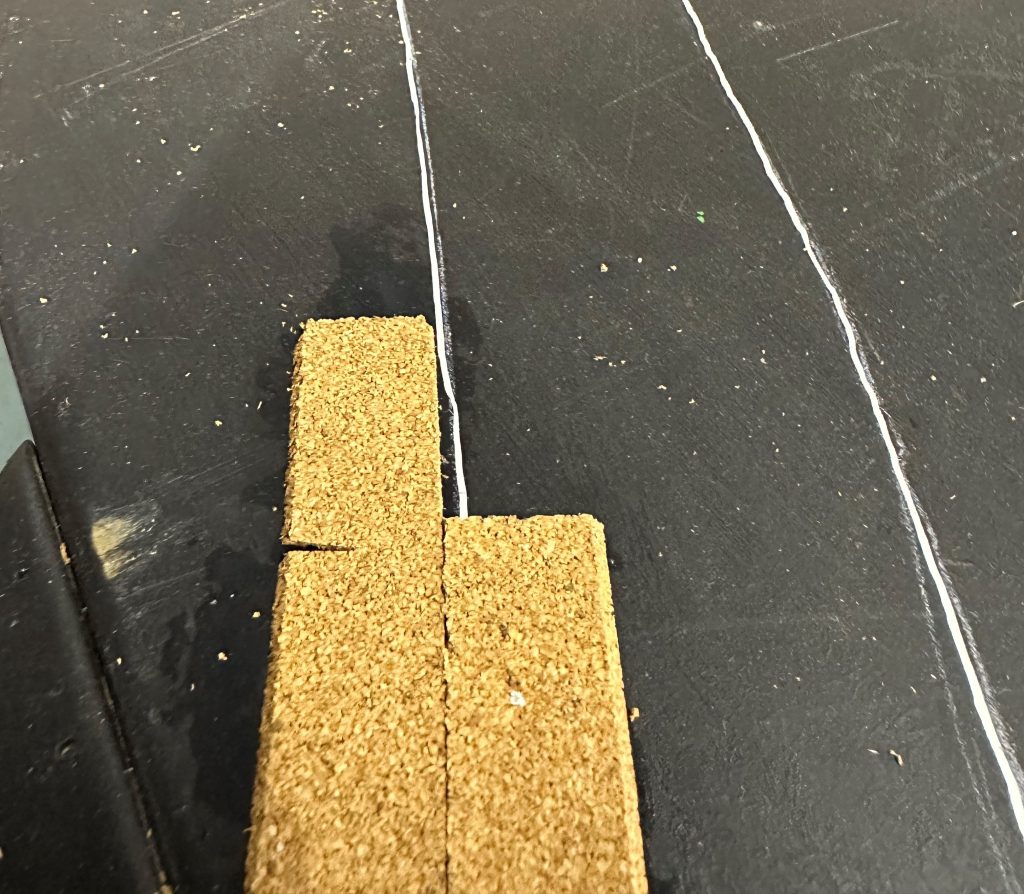
Trackwork
Points
- Peco Code 75 electrofrog, activated by Peco solenoid point motors with microswitch attached to change frog polarity.
Plain Track
- Mainline – Peco Code 75 Streamline track, concrete sleepers
- Secondary /fiddle Yard – Peco Code 75 Streamline wooden sleepered track
- Sidings – Peco bullhead
Wiring
Each baseboards to be self contained so only BUS wires are connected across baseboard joints
All electrical connections to be on rear face of baseboards to avoid having to go underneath baseboards when setting up.
Control box specification
Ballasting
Woodlands Scenics fine medium grey ballast glued in place with diluted PVA
